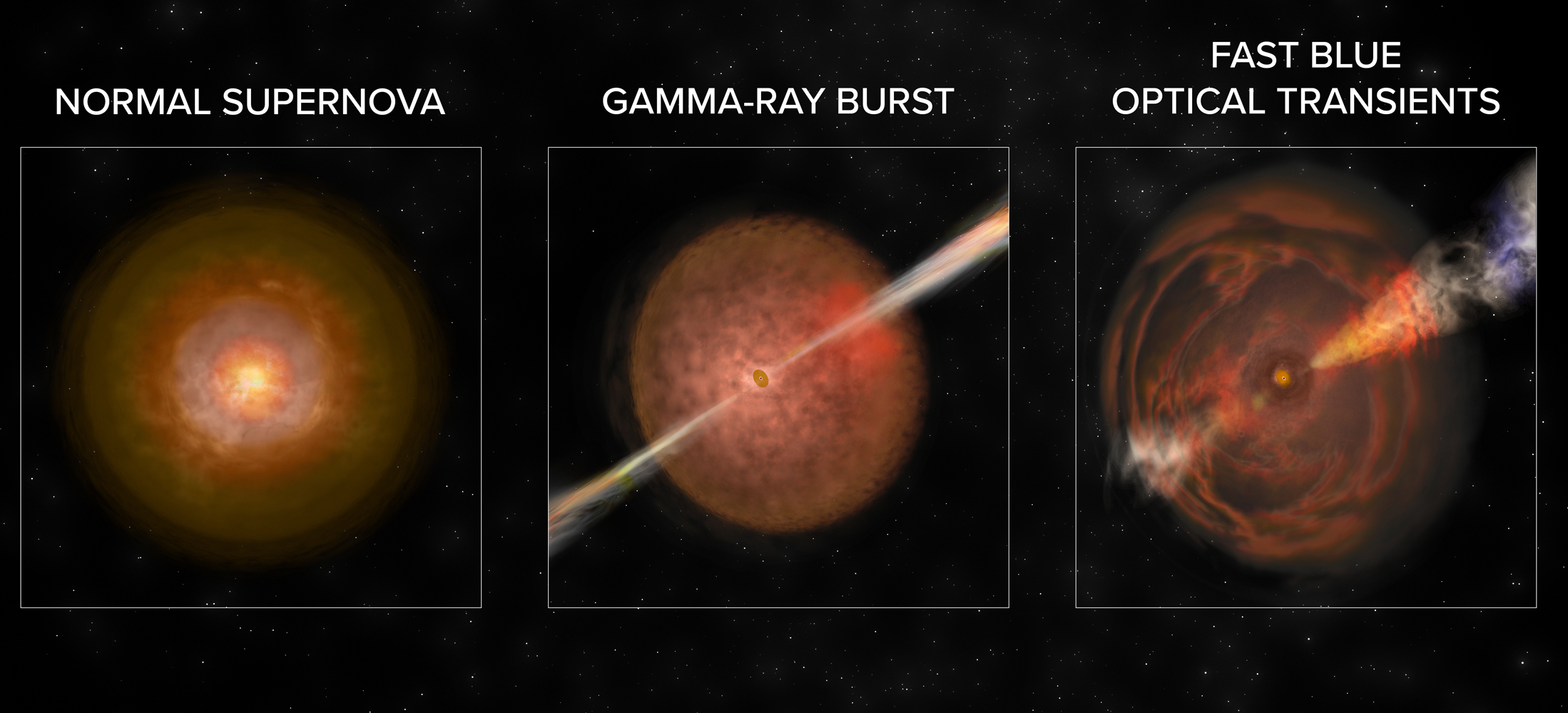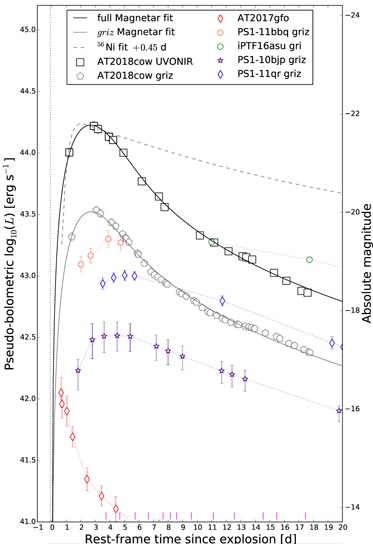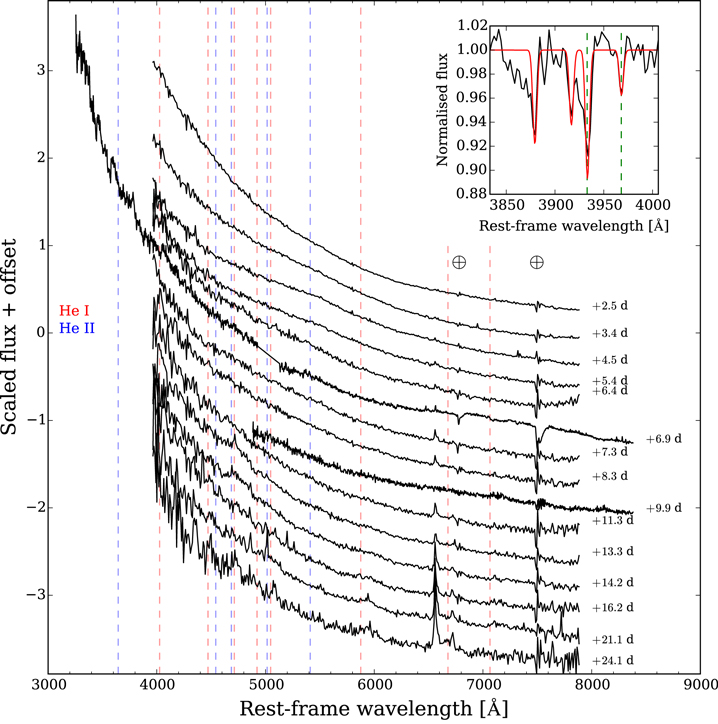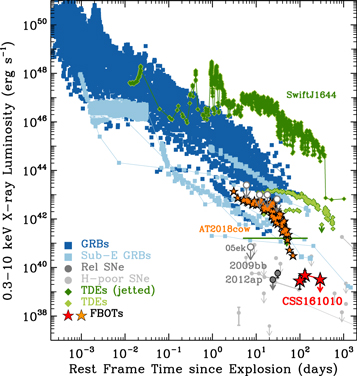Characterizing the Dynamics and Properties of FBOTs
Image Credit - Phil Drury, University of Sheffield
Luminous-Fast-Blue-Optical-Transients (LFBOTs) are named as such because they are relatively bright, fast brightening and dimming, blue (or hot), detected in the optical, and of course transient in nature. This all said, how do they compare to the customary transient of supernovae (SNae)?
Luminous?: SNae reach a peak luminosity (or brightness) of ~10e43 ergs per sec. FBOTs can be an order of magnitude brighter.
Fast?: SNae tend to brighten over the span of weeks and dim over the span of months. FBOTs can reach peak brightness after only a few days and dim over a few weeks.
Blue?: SNae can be blue too! SNae black-body temperatures can be ~10,000-20,000 K, while FBOTs have been identified with temperatures of ~30,000 and more. SNae dim over a longer period so they can redden significantly over their evolution. FBOTs are overall more blue!
So they stand out as far as transients go. What are they? Still unclear!

It is our job to characterize FBOTs by their inferred physical parameters to rule out or prop up proposed FBOT progenitor models. Their emission of radiation in the radio and x-ray bands over long periods suggest that a central engine (like a black hole or magnetar) is present at the heart of the FBOT injecting energy into launched ejecta after the explosion that ended the progenitor’s “life”. The presence of a dense circumstellar medium (likely comprised of ejecta from before the FBOT’s conception) could explain the radio emission we see (due to synchrotron emission). A collimated jet has been proposed as one piece of the FBOT puzzle, partially due to their similarity to gamma ray bursts (GRBs) in observed behavior, among other factors. Progenitor systems such as failed supernovae, tidal-disruption events, and neutron star mergers have been proposed as feasible candidates for the aforementioned remnant properties.
Some notable FBOTs mentioned on this page are AT2018cow (The Cow) and AT2020xnd (The Camel).


